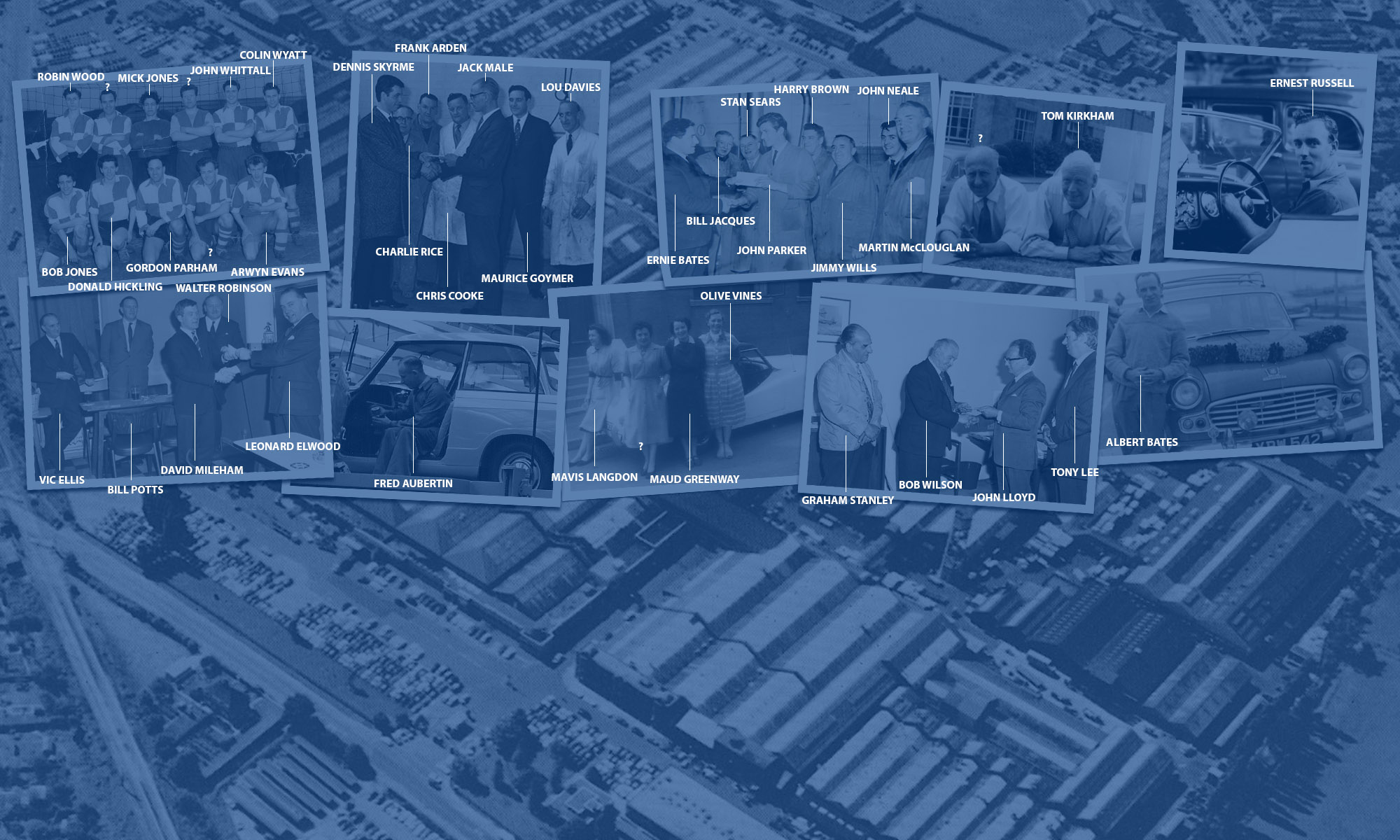Times Obituary
As chairman and managing director of the British Leyland Motor Corporation (BLMC) from its creation in 1968 from the merger with British Motor Holdings and the Leyland Motor Corporation until its demise in a government reorganisation in 1975, Lord Stokes was faced with the intractable task of bringing some shape and order to a British automotive industry whose problems became a paradigm of Britain’s failing industrial performance in the 1960s and 1970s.
The merger, combining as it did more than 100 businesses, including most of the remaining independent British manufacturing car companies, with bus and truck manufacture, and a wide range of other enterprises, created an unwieldy conglomerate which never succeeded in being competitive in the all-important fleet market in which its rivals Ford and General Motors were so successful.
Donald Stokes had earlier made his reputation in sales and export. He was among the foremost of a very small group of men who came to personify British industry during the 1960s when such revolutionary models as the Austin and Morris Mini seemed to exemplify British design genius (although they in fact were not commercially competitive). He had joined Leyland Motors as a student engineering apprentice in 1930. Apart from six years’ war service, during which he became assistant director of mechanical engineering (technical) with the Central Mediterranean Forces, all his working life was spent with the Leyland Group.
In 1946 Stokes was appointed to the newly created post of export development manager, and joined a team of comparatively young top administrators to pioneer the Leyland company’s postwar export drive. In the subsequent two decades he established a reputation as Britain’s most successful and tireless export salesman. In 1949 he became Leyland’s general sales and service manager, and in 1953 he joined the company’s main board.
From this time on Stokes was involved in the process of expansion and acquisition which was to turn Leyland from a comparatively small Lancashire-based truck and bus manufacturer to a multimillion-pound giant international motor firm embracing all sections of the automotive business. During the 1950s Leyland absorbed Albion Motors and Scammell Lorries, of which Stokes became managing director in 1960.
In 1961, with the takeover of Standard Triumph, Leyland entered the passenger car business for the first time, and found it a traumatic experience. The following year Associated Commercial Vehicles (AEC Thornycroft, Park Royal, Maudsley) came into the group, which was reconstituted in 1963 as the Leyland Motor Corporation. Stokes became sales director of the corporation, and subsequently deputy chairman and managing director, with Sir William (later Lord) Black of ACV as chairman.
Stokes was by now becoming a nationally known figure. In 1964 he received the first award of the Institute of Marketing and Sales Management for “a notable achievement in ensuring expanding markets for British industryâ€. In July 1965 he was invited by the Ministry of Defence to advise on the promotion of exports of defence equipment. The Stokes report, produced after a three-month secondment, was largely accepted and implemented by the Government.
The Labour Government, suspicious of the old industrial establishment yet anxious to work closely with forward-looking management, relied heavily on a handful of key men such as Stokes who, though in no sense politically committed, were ready to co-operate with any government which would help improve industrial performance. Stokes became a member of the Industrial Reorganisation Corporation board, and subsequently deputy chairman. He was also a member of the Northern Economic Planning Council, and for a time chairman of the Electronics Economic Development Committee. He was knighted in 1965 for services to export.
Donald Gresham Stokes was born in 1914 and educated at Blundell’s School in Tiverton, Devon, and Harris Institute of Technology in Preston. Dynamic, articulate, successful and unstuffy, he was an attractive exponent of the cult of modern management which came into vogue during the mid-Sixties. He had a flair for public relations, and a gift for the provocative phrase, together with all the persuasive arts of the salesman. As such, he achieved a public reputation that few industrialists had enjoyed before.
In April 1967, with the retirement of Lord Black, Stokes became chairman and managing director of the Leyland Motor Corporation. Leyland had an annual sales turnover of around £300 million. The only other British-owned motor company, British Motor Holdings (BMH), though substantially bigger than Leyland – despite the latter’s merger with the Rover Car Company in 1967 – had fallen on bad times, and discussions on a possible merger started, with the encouragement of the Government, in the autumn of 1967. During the talks Leyland acquired Aveling-Barford, giving it a foothold in the construction equipment business.
The merger with BMH was agreed and announced in January 1968, and brought into formal existence the following May. Though ostensibly a merger of equals, in fact it was a takeover of the bigger company, BMH, by the smaller, Leyland. The combined operation, BLMC, had a sales turnover at the time of the merger of some £800 million, about half of which consisted of overseas sales.
It was Britain’s largest exporter, the world’s fifth largest motor company, and it accounted for over half the entire output of the British motor industry.
The man in charge of this unwieldy giant was indubitably Stokes. He was chief executive and managing director, and in the autumn of 1968, with the retirement of Sir George Harriman, he became chairman and managing director. Leyland men were moved into many of the key positions in the former BMH, and to a remarkable extent in such a vast and complex business the power was concentrated in Stokes’s hands. There was relatively little delegation, and the fortunes of British Leyland came to be heavily identified with Stokes himself. He was given a life peerage in 1969. By now he was also a director of the National Westminster Bank, and deputy lieutenant of the County Palatine of Lancaster. He later became a director of London Weekend Television.
At first all appeared to go well for the new company. Sales rose to £1,000 million in the first year of operation. But it soon became clear that the difficulties of reorganisation, coupled with severe labour problems and the stagnation of the British home market, were straining management resources. Stokes’s career had been made as a salesman, and in running businesses which were sufficiently compact to allow for personal control. His talent lay in improvisation and personal dynamism rather than in the establishment of management systems and careful long-term planning.
To make sense of a business as complex as BLMC required a new style of management, which Stokes and his immediate subordinates did not find it easy to acquire. In 1969-70 the company barely succeeded in making a profit. With characteristic energy Stokes began applying the lessons learnt in the previous two years, and in the following year the tide looked as if it might be beginning to turn. During this time he was developing into a different type of manager from his past experience. With his typical honesty, he was the first to admit that he found this a somewhat uncongenial process.
One of the immediate necessities was to design and develop mass market models to counter Ford’s highly successful Cortina. The first result of this was the Morris Marina, which was introduced in 1971, using parts from various BL models combined with new body styling. Although it at first had reasonable sales it came to be perceived as a poor product that by the end of the decade was seen to have damaged BLMC’s standing. The smaller Allegro, a replacement for the earlier Austin/Morris 1100 and 1300 ranges, had a similarly dismal reputation.
Times Archive, 1969: Birth pains of the Maxi
Sir Donald’s first reaction to the Austin 1500 was that the basic five-door, big space concept was good, but that it utterly lacked sex appeal
Quite apart from design that made both cars look simply off the pace compared with that of competing Ford and General Motors models, both suffered from the shocking industrial relations that dogged BLMC’s plants in the 1970s, and which had serious effects on quality and reliability. Both at this level and the quality end of the market the company was developing a reputation for producing cars that simply no one wanted to buy, and the increasingly desperate tone of its television advertising campaigns seemed only to underscore this. BLMC came simply to symbolise Britain’s general industrial malaise.
In 1975 the Government asked its industrial adviser Sir Don Ryder to undertake an inquiry into the company’s prospects. His report led to a radical government-sponsored restructuring of it as British Leyland (BL), in which there was no future hands-on role for Stokes, who stepped down. After 1975 he continued as president of BL for a further four years and he remained a consultant until 1981. He was chairman, KBH Communications, from 1987 to 1995.
Stokes was married in 1939 to Laura Elizabeth Courteney Lamb. She died in 1995. They had one son. Stokes was married to Patricia June Pascall in 2000.
Lord Stokes, industrialist, was born on March 22, 1914. He died on July 21, 2008, aged 94


Standard Triumph Works Directory
Documenting Employees of the Standard and Triumph Works